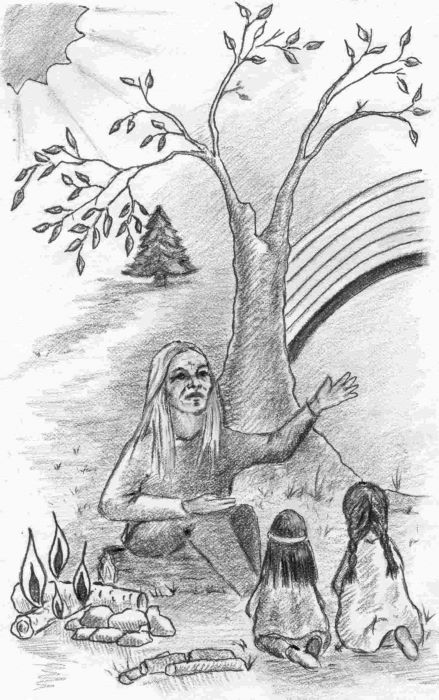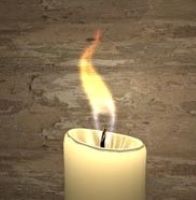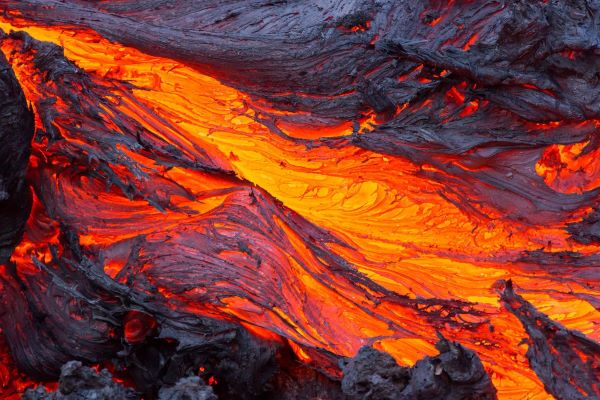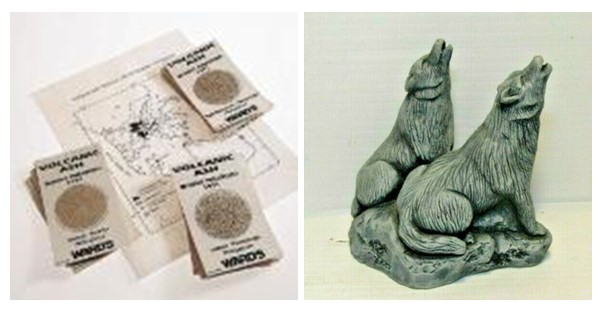
RED - FLAME OF LIFE
“Grandfather, why is fire RED?”
“To answer your question, my child, we must first learn about fire.
“Each fire is different.
“Some change all that is around them with great speed. The colors of their flames reveal what is in their hearts. We know them by the wondrous light and warmth they give.
“Others burn more slowly. We know them by their glow.
“Still others burn so slowly we are unable to see them. We know them, not by their flame nor their glow, but by the changes we see.
“Each fire is also the same.
“Each needs warmth to begin life, food to continue life, and air to breathe.
“To learn why fire is red, we must first learn about the color red. Look into the heart of a sunbeam. Tell me about the red ray.”
“Grandfather, the red is at the very beginning of the rainbow. It is the longest and warmest of all the colors.”
“The colors and wonders of fire are as varied as the colors and hues of the rainbow. Even though flames are many colors, red is the color of fire and the flame of life.
“You see, my child, the answer to your question is not an answer, but rather an understanding of the flame of life.
“The needs which unite all fires also unite all of us in the brotherhood of life. Each begins with the divine spark of light and warmth from the heart of the Creator, just as red begins the colors of the rainbow.
“The longest river which flows throughout the universe is the river of life. This river flows within each Creation. It carries the divine breath through which each flame and each spirit is sustained. Through divine breath all Creation is interwoven, for it is the outbreath of one which is the inbreath of another.
“Just as the kind of fuel determines the quality of the fire, so does the spirit determine the quality of life. The more freely the spirit flows, the brighter the flame of life glows.
“The colors of the flame reveal the nature of the fuel. So it is with the spirit. The flame, which burns within the heart and enfolds each individual, clearly reveals the spirit within.
“In some we see a golden sun, bringing light and warmth to all. In others we see a gentle glow. In still others we can see no light at all. Their light is like a small candle burning upon a vast planet. We know them, not by their light, but by the changes we see.
“Many times in the asking of a question, a path of understanding is opened before us. So, my child, in all your questionings look not only for the answers, but also for the understandings, which will reveal to you the mysteries of the universe.”

I sometimes use a burning candle as a focus to meditate. Each observation enhances the wonder of the myriad aspects of a burning candle. When watching the flickering of the flame, my heart smiles as it joins in the dance of the salamanders.
Different observations can be made when the candle is placed on a flat surface -versus- when the candle is placed in a beaker (glass jar).
FLAME … initial speed of burning – speed of burning once the wax starts to melt – height of the flame in the open air – quality of light generated by the flame – colors of the flame – colors of flame light reflected off white paper – color distribution within flame – shape of flame – response of flame to air movement – response of flame to water – changes in flame height when beaker is lowered – changes in flame color when beaker is lowered – direction flame burns when candle is tilted – duration of smoke when candle is extinguished – time candle burns under large beaker – time candle burns under medium beaker – time candle burns under small beaker – shape of flame when water is placed in well
WICK … position of wick of unlit candle – color of wick of unlit candle – structure of the wick of unlit candle – ability of wick to burn if placed in water – ability of wick to burn if placed in lamp fluid – color of base of wick when burning – color of stalk of wick when burning – flow patterns of liquid wax – rate wick burns when not in wax – rate wick burns when in candle – apparent dryness or wetness of base of wick
CANDLE (paraffin) … color of candle – texture of candle – shape of the candle – rate candle is consumed – appearance of wax when candle is burning – color of tip of wick when burning – rate candle is consumed if wax in well is drained – rate candle is consumed if wax is not drained – width of tracks left by flowing wax
HEAT … heat distribution around flame (top, sides, base) – side of hand that feels heat when placed close to flame
CONDENSATE … appearance of condensate in beaker – conditions under which condensate forms – location where condensate forms
rate condensate forms – rate condensate disappears if flame is removed
DEPOSITS … color of deposits on beaker – location where deposits form – rate deposits form on beaker – conditions under which deposits form – texture of deposits
SMOKE … color of the smoke – quantity of smoke – distribution of smoke – change in smoke production with funnel – distance from which candle can be relit by relighting smoke – color bromothymol blue turns in the smoke
ODORS … odors produced by burning candle – odors produced by unlit candle – odors released by extinguished candle
SOUND … sound of candle when water is placed in well – sound produced by burning candle
THE CHEMISTRY OF COMBUSTION
Combustion is a chemical reaction that gives off heat and light through the rapid union of oxygen with another substance. Combustion releases chemical energy from hydrocarbon fuels such as oil, coal, wood, and natural gas.
1. Combustion Is a chemical reaction that gives off heat and light through the rapid union of oxygen with a substance.
a. Oxidation is the loss of one or more electrons In a chemical reaction. Reduction is the gain of one or more electrons.
b. Combustion of hydrocarbons is an oxidation reduction reaction, The oxygen Is reduced as it combines with the hydrocarbons to form carbon dioxide and water. Carbon and hydrogen are oxidized.
2. Combustion (burning) is the primary process used to release chemical energy from carbon based substances (wood, oil, coal, natural gas, etc.).
a. Energy is stored in the chemical bonds of molecules, Breaking these bonds requires energy; reforming these bonds into different compounds releases useful heat energy.
b. For any particular material, the speed of combustion determines the temperature surrounding the burning surface, The temperature of slowly burning wood is lower than that of rapidly burning wood. But the heat of combustion, the heat given off by a certain amount of burning wood, is always the same, whether combustion is rapid or slow. For example, acetylene burns hotter not because it burns faster, but because the material itself has more energy in it per unit volume of weight than a substance that gives off less heat as it burns.
3. The primary products of combustion of a hydrocarbon fuel are carbon dioxide, water, and energy in the form of heat and light. This is shown in the combustion equation for the simplest hydrocarbon fuel, methane (CHy ):
CH4 + 209 > 2H90 + COd + heat + light
a, Most hydrocarbon fuels also contain other elements, particularly sulfur and nitrogen. In the combustion reaction, these elements combine with free oxygen from the air to form sulfur oxides and nitrous oxides, both of which have been linked to air pollution.

FIRE FROM THE HEART OF EARTH MOTHER
Lava Flows … Volcanoes
Catalog Number: (470023-762)
Ash Sculptures
